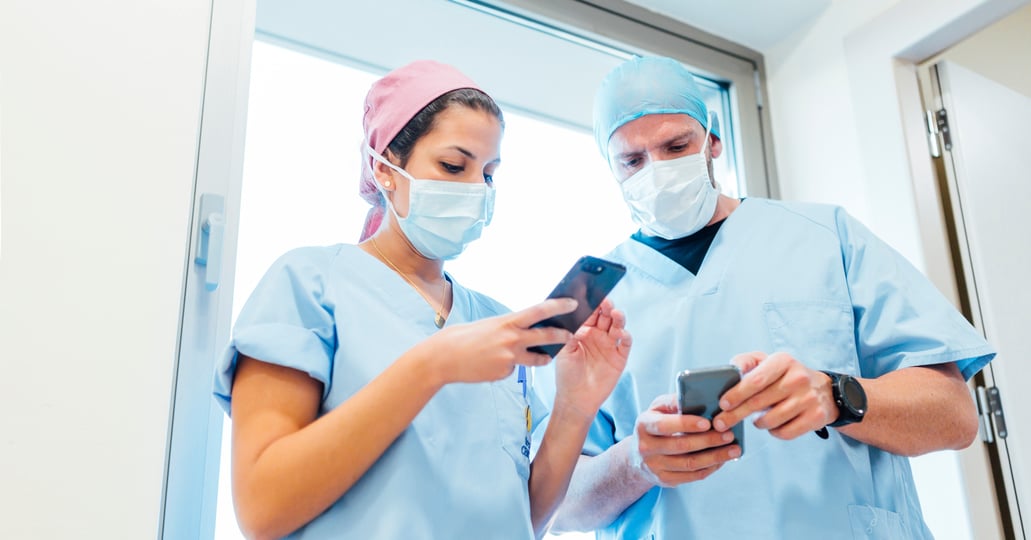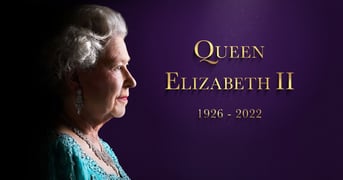How Effective Are Clinical Messaging Systems Within Healthcare?
4 minute read | 17/01/2023

In the UK, GPs refer millions of patients per year to Secondary Care. This represents a substantial administrative burden on the NHS.
While the NHS has pursued a paperless agenda for many years, there is still work to do.
Also, eliminating manual tasks in the process is essential. Taking the two together creates a more efficient workflow, reduces time spent on unnecessary administration, and reduces the number of physical letters that the NHS has to create.
Before the E-referral service and its predecessor, Choose and Book, every single referral required an individual letter to be sent to the hospital.
With the average cost to write, print, envelope, and post a letter standing at around £3.50, the NHS was spending almost £50M per annum just on sending letters.
That’s before considering that each appointment then resulted in a confirmation of the appointment by post, and after the visit, a letter back to the GP.
Thankfully, those days are mostly behind us, but changes still need to happen. There is no doubt that the removal of paper processes results in a faster, more seamless experience for both the clinician and the patient.
Having one place to send and receive referrals means the process can easily be monitored from start to finish.
There are many clinical messaging and referral apps on the market. This technology offers similar functionality to popular messaging apps such as WhatsApp and Facebook Messenger. However, it includes additional security features to make it a safe platform for sharing patient information, significantly reducing the risk of data being leaked or lost.
Within a NHS-certified platform, clinicians can view, share, annotate, and discuss medical imaging and patient cases at their fingertips to support informed, faster decision-making.
Here are some further benefits of clinical messaging and referral apps as well as cost-saving statistics.
1. Reduction in Manual Administration Tasks
A case study from Bleepa revealed:
“Benchmarking for respiratory inpatient referrals showed that the existing process took on average 2.1 days before the receiving team got to review the referrals.
With the introduction of Bleepa and the removal of the manual administrative steps, referrals are actioned within 0.4 days. This represents a saving of 1.7 days per referral.”
Whilst this may seem unremarkable in isolation, if it was possible to repeat this success across all 14,000,000 referrals in the NHS a year, that’s over 5M days of administration time removed.
How many more patients could be processed and seen with that extra time?
2. Improved Data Quality
Poorly integrated IT systems that produce low-quality documentation can cause detrimental effects on patient safety and doctors will have to spend time sorting through inaccurate and incomplete medical information.
A misdiagnosis will affect the health of patients, and they may be required to stay in hospital for longer.
Improving data quality by implementing secure and advanced systems will reduce clinical delays. This will improve efficiency levels and reduce the length of stay (LOS).
Bed blockers are a huge problem for the NHS. With around 115,000 beds available, it is believed that up to 20% of them are taken by people fit for discharge.
A widely held statistic is that an Acute Hospital bed costs around £450 per day, with an average impatient episode. That means that every day, the NHS spends over £10M providing beds for people who are healthy enough to be discharged.
Whilst this problem is very complex, if it is possible to reduce this burden by just 1%, the NHS would save over £100,000 per day.
Download the Handout to learn more.
SPARK TSL’s continuous aim is to enhance the patient experience, drive efficiencies for staff, and save significant costs to the NHS
Deploying a comprehensive clinical messaging and referral system will contribute to doing just that. The average Trust could see savings of up to £551,387 per year by:
- A reduction of admin tasks - £49,687
- Improved clinical response - £11,356
- Reduction of interruption - £52,344
- Reduction of LOS – minimum £438,000
SPARK® Horizon hosts a suite of applications suitable for patients and staff to enrich the hospital experience. Click below to download the brochure and see for yourself.
About the author
Ria Stevens
From helpful strategies to the benefits of WiFi and patient engagement solutions, check out articles written by our Marketing Executive, Ria Stevens, for all the latest industry and Healthtech insights.
More articles by the author
Related articles
 Company News
Company News
Free TV For Patients in Honour of Queen Elizabeth II
Following the devastating news of Queen Elizabeth II’s passing, on the 10th September the Government ...
 The SPARK Solution
The SPARK Solution
We Can Help Trusts Achieve Goals to Become a Paperless Industry
Many organisations in this day and age have a vision to become completely paperless – not only will this be a ...
 Company News
Company News
SPARK TSL signs deal with Autumna to reduce hospital readmissions
SPARK TSL is excited to announce a partnership with Autumna that, through a new app on its SPARK® Media ...


